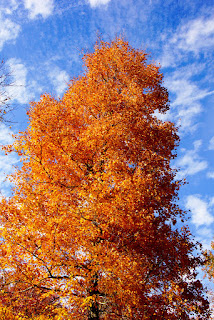Light possesses many moods, so many in fact it becomes difficult to define all of them. As photographers this abundant moody light resource becomes a treasure trove of opportunity because light in all of its moods is what we use to create images that serve to stir the soul.
We are taught as photographers the best possible light is usually found early or late in the day. As a general rule this is true, however, great light is where you find it no matter what time of day even if it is during the middle part of a bright sunny day. Finding great light in the middle of the day can be a challenge but knowing where to look can improve your chances of success and open photographic opportunities regardless of the time of day. A good place to start is to look for those
Natural Light Boxes where you can capture interesting details without having to worry about harsh bright spots or high contrasts.
A light box of course usually refers to an actual box where you place objects of interest and then flood it with a soft even light using various techniques. They can be painted black or white and even colored and are a great way to shoot indoors. A Natural Light Box serves a similar purpose, except it occurs naturally and offers a great way to shoot outdoors even when it is bright.
What you look for are recessed shaded areas tucked into some kind of cover. The first photo above was taken within one of those tucked in shaded areas during a bright sunny day. A big bright sunny sky acts like a huge soft box and fills in the shaded area with a softer form of light than direct sunlight will provide. The idea is to look for an open tucked away spot yet one that is exposed to the effects of the soft box effect of the sky. Sometimes you can help things along by using some kind of reflector to bounce a small amount of soft light into your subject or even a piece of foam board to provide a bit more shadow if there is too much sun filtering through.

The photo above was taken late one morning while the dew was still collecting on the blades of grass. There was a lot of sun filtering through the grass, some of which can be seen in the upper right hand corner, but this particular blade of grass sat secure inside a shaded area. I simply used a long focal length lens and zoomed in to capture the subtle reflections from the dew drops.
Your natural light box can be found almost anywhere. The photo of this fuzzy critter was found in an open area that happened to be shaded by a large tree. The background was also shaded and provided a wonderfully soft backdrop for this composition. The photo required some creative zooming and positioning of the camera angle to place everything in alignment, but even during a bright sunny afternoon, good light can be found. Although most any kind of lens will work, I find a zoom lens provides a better platform for blurring the background allowing your subject to stand apart, like the photo below.

Sometimes you want to use direct sunlight to illuminate your subject but avoid harsh shadows and contrasts. A good way to do this is to have the light project through your subject from behind and then align your composition so the subject is posed against a dark background not unlike the collection of leaves seemingly suspended against a dark background seen below. Taken in the early afternoon of a bright sunny day, it was a matter of aligning the branch so the light shined through the opaque nature of the leaves and using a shaded area as the background to make it appear suspended in an artificial setting. The exposure was such the backlit leaves were captured in great detail, but the shaded background area, which was actually a weedy, tree lined jumble, became a virtually black backdrop.

Looking for and using Natural Light Boxes can be a fun and productive way to photograph all through the day. It is just a matter of recognizing what makes for a good light source and then creatively using it. There are as many ways to do this kind of photography as there are people taking the pictures. This kind of photography also serves well for a
Walk About photo shoot and can produce some amazing results. Give it a try. I do believe you will enjoy the results.
 We look closely into the trees and discover single leaves that speak to us about their last days of glory filled with a final vibrant message of color.
We look closely into the trees and discover single leaves that speak to us about their last days of glory filled with a final vibrant message of color.




























